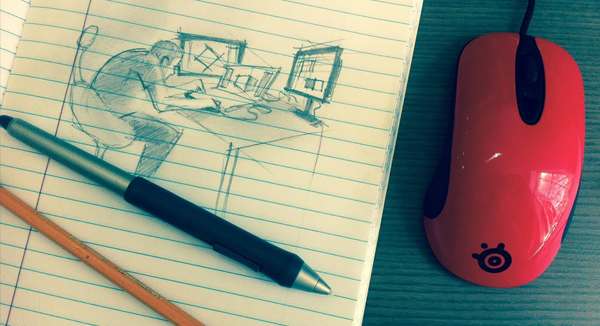As a 3D artist at Marxent, my view of the world is pretty unique. In many ways, it is a dream job for a creative with a desire to work in 3D animation and with emerging technologies. The work requires a constant creative connection to reality combined with the technical skills to reinterpret it digitally. I am always challenged and never bored.
My day starts with observing the world around me and compiling mental notes on textures, materials and characters that exist in reality. I often find inspiration in every day objects such as desks, chairs, tree branches and even Doritos. My inner creative is constantly asking questions like, “What kind of material definition does that table have?” or “If I were that character, how would I move?”
What it’s like to work as a 3D artist at Marxent
My daily 3D creative process usually involves at least one or more of these techniques and applications.
1) 3D Modeling
Creating things from life is always a challenge and is filled with both creative and technical hurdles. 3D modeling at its most basic involves creating and controlling a series of vertices (points in 3D space), pulling edges (lines that make up the 3D shapes) and smoothing the intersections of points and lines along the way.
2) Unwrapping
This is like a new version of the classic game of “Tetris.” The goal here is to get a series of polygons (the shapes that compose 3D models) into a single image (a UV unwrap) for texturing. A UV unwrap isn’t usually the most interesting thing to look at, it’s really just the foundation for the next step. Some people are great at it, some people are bad at it, and some people love it. I love this process and can easily get lost in unwrapping a 3D model, from the simplest of chairs to the goofiest dragon.
3) Texturing
Out of all the 3D tasks on this list, texturing is my favorite. Texturing is the application of colors and details to UV unwrapped 3D models. It’s this phase that pretty much either makes or breaks the 3D model. Without the texture, the model loses out on its potential for visual flair.
4) Animation
Bringing a character to life with animation is a rewarding but tedious task. Before a model can be animated, it has to be “rigged” and “skinned” (creating a skeleton for the model, and applying constraints for what parts of the skeleton controls the model’s movements). Once the model is rigged and skinned, the fun part begins. After making a few keyframes, it’s time for a polish phase; making sure the timing of the motions are correct. Now sometimes, I actually have to get up and try out the character’s animations, which can be tricky, especially for a dragon. Luckily an extension cord and tape go a long way. It also helps to have co-workers volunteer to do a runway walk to really capture the essence of a girl during a fashion show.
5) Exporting 3D models for development
This phase involves preparing a 3D model for a developer so that the developer can start implementing the associated interactive features. This is where the teamwork comes in, as there’s a lot of back and forth between the 3D artist and the developer to ensure that the artistic vision and the implementation are aligned. This is inevitably where things start to break. I don’t mind this part and in fact consider it an important part of the creative process. If I’m not pushing the boundaries and failing, I’m not learning.
Some of these steps in producing 3D art for Augmented Reality applications can take mere hours, while others take days. Sometimes it gets frustrating. For me, it’s all about working in an environment that respects me as an artist and getting to watch my work come to life in incredible new ways.












